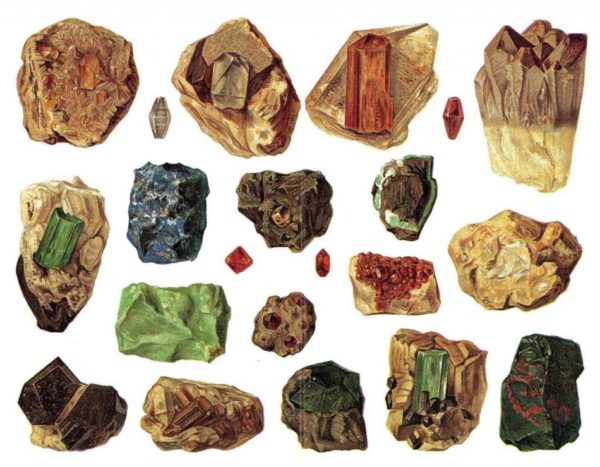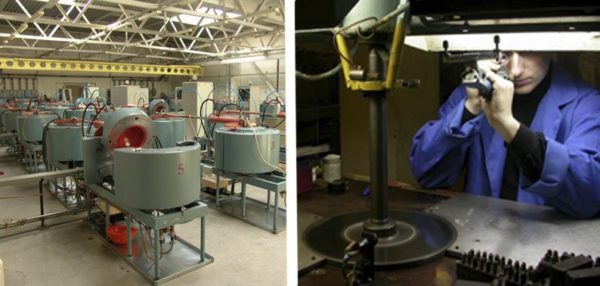Natural vs Lab Grown Gemstones

The production of artificial gemstones began in the second half of the 19th century. And the first experiments on the creation of synthetic gems began to be carried out by alchemists in ancient Egypt. They dreamed of creating analogs of natural stones and getting “untold riches”. All secrets were kept in the strictest confidence. But in those days practically nothing was known about synthesis and attempts were not crowned with success.
The first synthetic gemstone was ruby. It was created by the French chemist M.A. Verneuil in 1892. After the ruby, sapphire, alexandrite and garnet were synthesized. In the post-war period, such stones began to gain more and more popularity.Quite often, in the 60s of the XX century, gold jewelry with artificial stones was passed off as natural. The play of light and rich color of this stone was very popular. Even now, you can find jewelry with artificially grown stones that have been passed down from generation to generation.
Today, laboratories synthesize almost all minerals known in nature. Their quality is very high and practically does not differ from natural analogues.

Natural rough stones
Most buyers perceive synthetic or cultured gemstones as inexpensive imitations of natural gemstones. This statement is far from the truth. Let’s see why.
First, lab-created gemstones are superior to natural counterparts. In many ways, they are almost perfect. Modern technologies make it possible to obtain stones without foreign inclusions, cracks, turbidity and other disadvantages that reduce their value. Secondly, only an experienced gemologist and only with special equipment can distinguish such a stone from a natural one.
What is the difference between natural and synthetic stone?
Today, when the production of synthetic stones has reached such a high level, even the most experienced buyer does not always know which product he is purchasing. But there is no need to worry about this. The advantages of synthetic stones are obvious: they are cheaper, easier to process and in the production process itself. Thanks to them, manufacturers can quickly fill the market and create unique, large products, which is not always possible to achieve with natural stones.
And if earlier artificial stones resembled precious ones in some way, today they are different from natural ones only in price. Perfectly correct cut is made on synthetic gemstones, which is not always possible on natural stones. Sometimes the master tries to preserve the weight of the natural stone as much as possible and makes compromises with quality when cutting. Therefore, the artificial stone will have a maximum refractive index, which means it will “play” at the slightest hit of a ray of light.

Equipment for growing synthetic diamonds
Lab-created gemstones are more comfortable to wear. They do not react to a greasy environment, while natural ones fade from contact with the hand or body and to restore their shine, they need treatment with special solutions. Synthesized ruby, spinel, emerald or sapphire are indistinguishable from their natural counterparts – technologies allow you to achieve the desired “expensive” color, purity and size.
To please the most demanding customers, manufacturers even create synthetic stones with specified parameters that are as close to natural as possible. That is, synthetic gemstone is grown not with ideal characteristics, but with “natural” imperfections: small inclusions, cracks and defects.
SYNTHETIC STONES PRODUCE IN TWO WAYS:
- in large batches in factories under the influence of high pressure and temperature. This is the cheapest way, the stones obtained are worth accordingly;
- in laboratories in small batches. This is how the most valuable certified stones are created.
3 easy ways to distinguish a lab-created gemstone from a natural one?
- If the stone and its price are too good to be true, you can assume that this is a synthetic specimen.
- Give the stone to an independent experienced gemologist. Gemological tests will give an answer with a high, though not 100% probability. We have already said that synthetic stones are very similar to natural ones.
- A responsible manufacturer, especially for well-known jewelry brands, always indicates the nature of the stone and its characteristics in the product passport or stone certificate.
